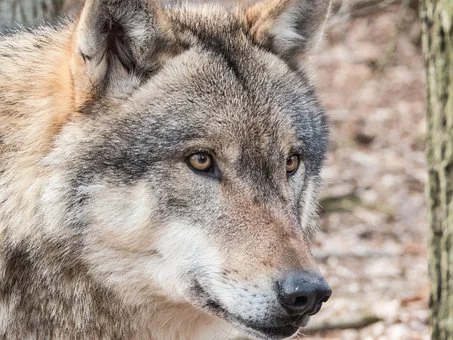Red wolves (Canis rufus) are one of the rarest and most endangered canids in the world. They are often confused with coyotes or gray wolves due to their physical similarities, but are a distinct species with their own unique characteristics.
Understanding these interesting facts about red wolves is crucial to helping conserve and protect the species for future generations.
History and Conservation Status
The red wolf was once found throughout the southeastern United States, from Texas to Florida. However, due to habitat destruction and over-hunting, their population dwindled to near extinction by the 1960s.
In 1973, the species was declared endangered, and a breeding program was established to save them from extinction.
Today, the red wolf population is still critically endangered, with fewer than 300 individuals living in the wild. Efforts to restore their population are ongoing, with a focus on releasing captive-bred wolves into the wild and protecting their habitat.
Physical Characteristics
Red wolves are medium-sized canids, weighing between 45 and 80 pounds and standing about 26 inches tall at the shoulder. They are slender and agile, with long legs and a narrow head.
Their fur is reddish-brown or grayish-brown, with a black-tipped tail and a distinctive black line running down the back of their legs.
One unique physical feature of the red wolf is their large, pointed ears. These allow them to hear prey and predators from great distances. They also have an acute sense of smell and excellent vision, which helps them navigate their environment.
Behavior and Habitat
Red wolves are social animals that live in packs consisting of a breeding pair and their offspring. They are primarily nocturnal, hunting and foraging for food at night. Their diet consists of small mammals such as rabbits, rodents, and deer.
Red wolves once roamed the entire southeastern United States, but their range has been greatly reduced due to habitat loss and human encroachment. They now live in small pockets of protected land in North Carolina, where they are closely monitored and protected.
Cultural Significance
Red wolves have played an important role in Native American folklore and mythology. They are often associated with strength, courage, and loyalty. The Cherokee people, for example, believed that the red wolf was a powerful spirit that protected their tribe from harm.
Red wolves also play a significant role in the ecosystem as a top predator, helping to control the population of smaller mammals and maintaining biodiversity.
Misconceptions and Myths
One common misconception about red wolves is that they are aggressive and pose a threat to humans. In reality, they are shy and elusive, and typically avoid contact with humans.
Another myth is that red wolves are not a distinct species, but rather a hybrid of coyotes and gray wolves. However, genetic studies have shown that red wolves are a distinct species with a unique genetic makeup.
Related: Interesting Facts About Gray Wolf
Conclusion
Red wolves are fascinating creatures that are worth learning about and protecting. Their history, physical characteristics, behavior, cultural significance, and ecological importance make them an important part of our natural world.
Understanding these interesting facts about red wolves can help us appreciate and protect this endangered species for generations to come.
